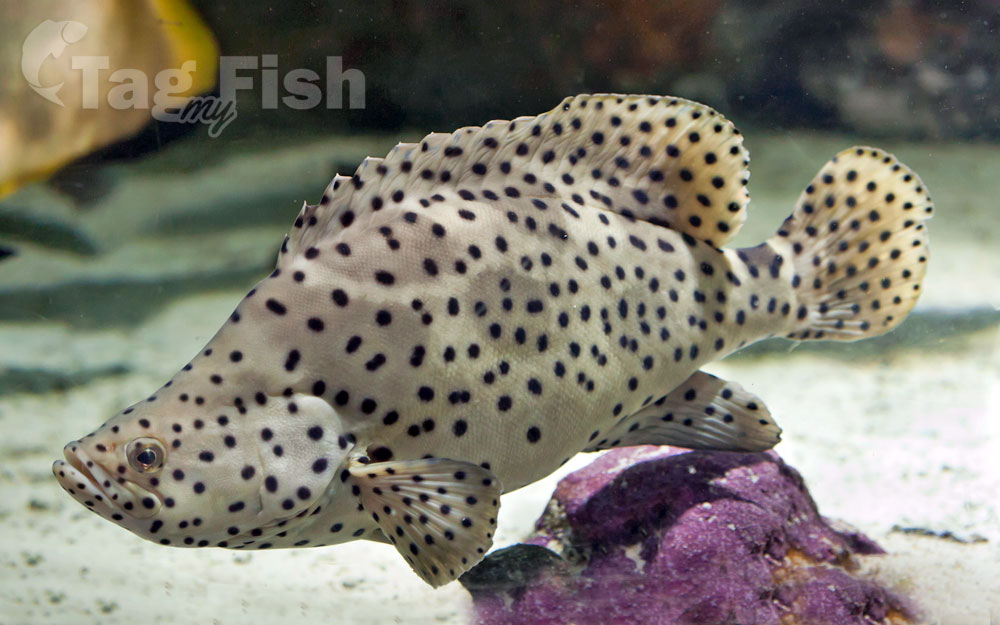Humpback grouper
(Cromileptes altivelis)

Classification
General data
The humpback grouper (Cromileptes altivelis), panther grouper, or (in Australia) barramundi cod is a species of marine ray-finned fish, a grouper from the subfamily Epinephelinae which is in the family Serranidae which also includes the anthias and sea basses. It occurs in the Western Pacific Ocean.
Description
The humpback grouper is a medium-sized fish which grows up to 70 cm (28 in). Its particular body shape makes this grouper quite impossible to mix up with other fishes. Its body is compressed laterally and is relatively high. This stocky and strange visual effect is accented by its concave profile and its elongated snout which gives it a humpbacked appearance.
The young have a white background with round black spots and are continuously swimming head down. The adults have a body colouration with variances of grey and beige with darker blotches variable in size on the body. Small black spots cover the whole body.
Distribution and habitat
It is widely distributed throughout the tropical waters of the central Indo-West Pacific region. The humpback grouper lives in clear waters from lagoons and seaward reefs with a preference for dead or silty areas. They are found in a range of depth from 2 to 40 m (6.6 to 131.2 ft).
In 2012, a single individual was speared in the waters off South Florida, raising fears that it could become invasive, similar to the lionfish.











